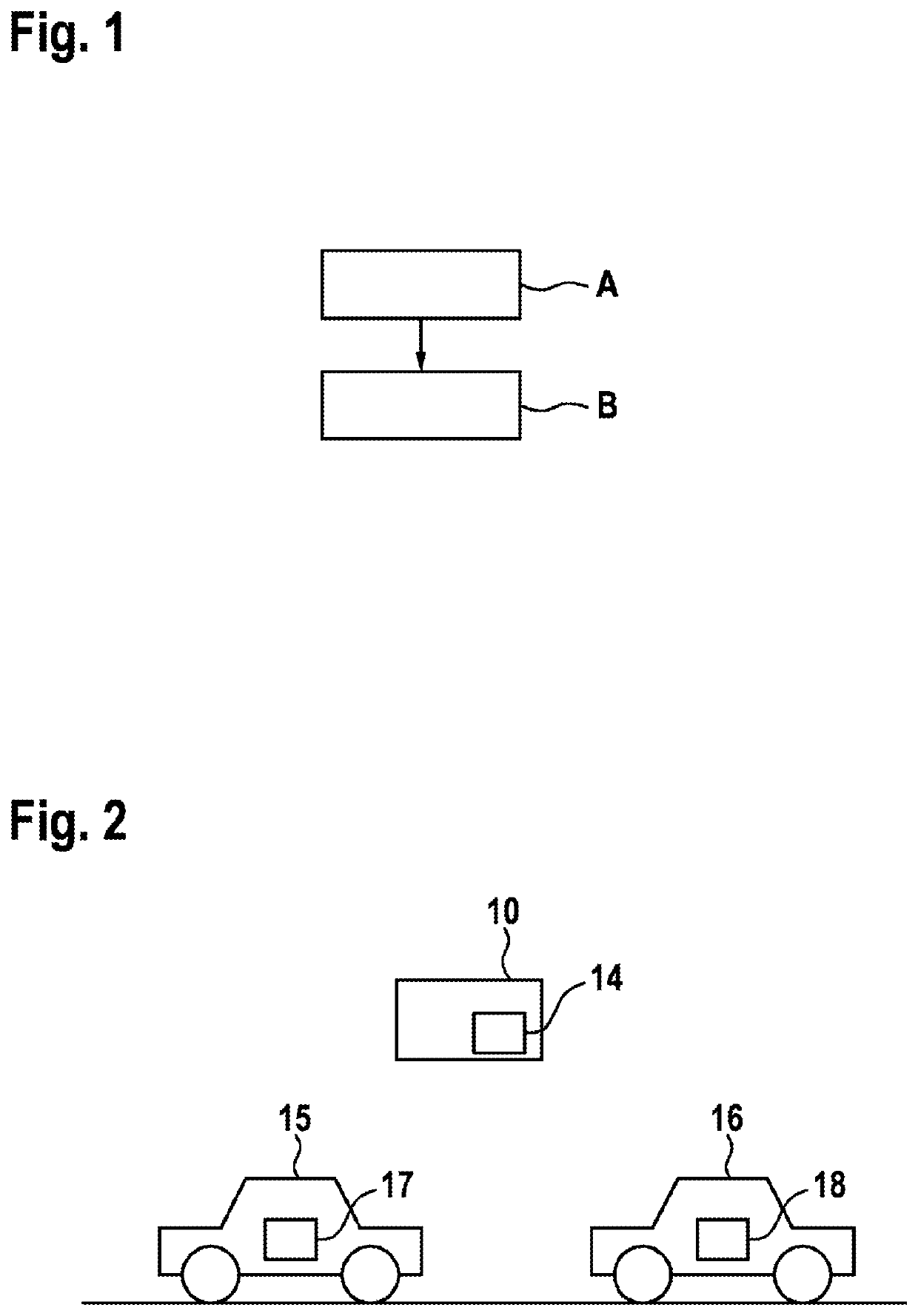Method for operating a charging device
a charging device and charging battery technology, applied in the direction of batteries/cells, instruments, transportation and packaging, etc., can solve the problems of inability to drive to a charging station and charge the battery, disadvantageous normal manual connection, and inability to charge the battery
- Summary
- Abstract
- Description
- Claims
- Application Information
AI Technical Summary
Benefits of technology
Problems solved by technology
Method used
Image
Examples
Embodiment Construction
[0026]FIG. 1 shows a schematic illustration of the method according to the invention for operating a charging device 10 for charging energy stores 12 of vehicles 13, preferably electric or hybrid vehicles. The charging device 10 is connected to an Internet-enabled server 14. In a method step A, a receiver vehicle 15 with an empty (or partly charged) battery 17 communicates its charging requirement to the charging device 10. In a method step B, a donor vehicle 16 with an at least partly charged battery 18 communicates its willingness to charge to the charging device 10.
[0027]FIG. 2 shows a schematic illustration of a donor vehicle and of a receiver vehicle. Identical elements with regard to FIG. 1 are provided with the same reference signs and are not explained in more detail. If a vehicle 13, 15, for example a hybrid or an electric vehicle with an empty battery 12, 17, is immobilized, the present invention is intended to allow this “receiver vehicle” to find a vehicle 13 or donor ve...
PUM
 Login to View More
Login to View More Abstract
Description
Claims
Application Information
 Login to View More
Login to View More - R&D
- Intellectual Property
- Life Sciences
- Materials
- Tech Scout
- Unparalleled Data Quality
- Higher Quality Content
- 60% Fewer Hallucinations
Browse by: Latest US Patents, China's latest patents, Technical Efficacy Thesaurus, Application Domain, Technology Topic, Popular Technical Reports.
© 2025 PatSnap. All rights reserved.Legal|Privacy policy|Modern Slavery Act Transparency Statement|Sitemap|About US| Contact US: help@patsnap.com

